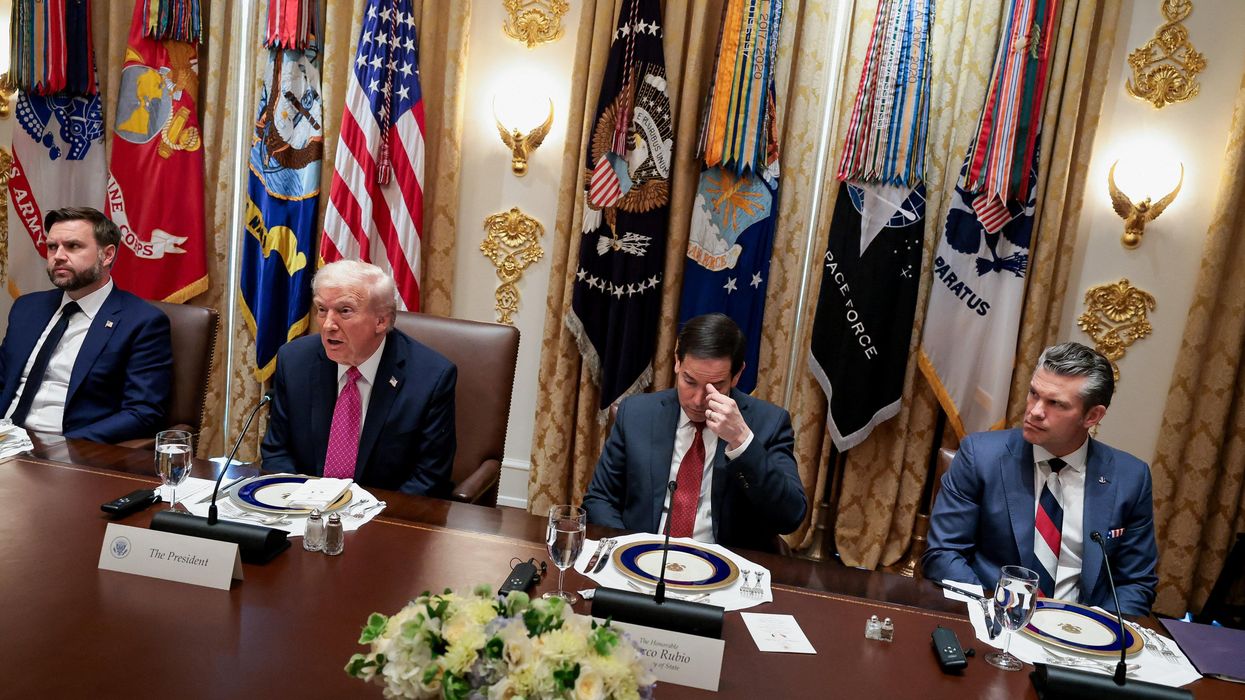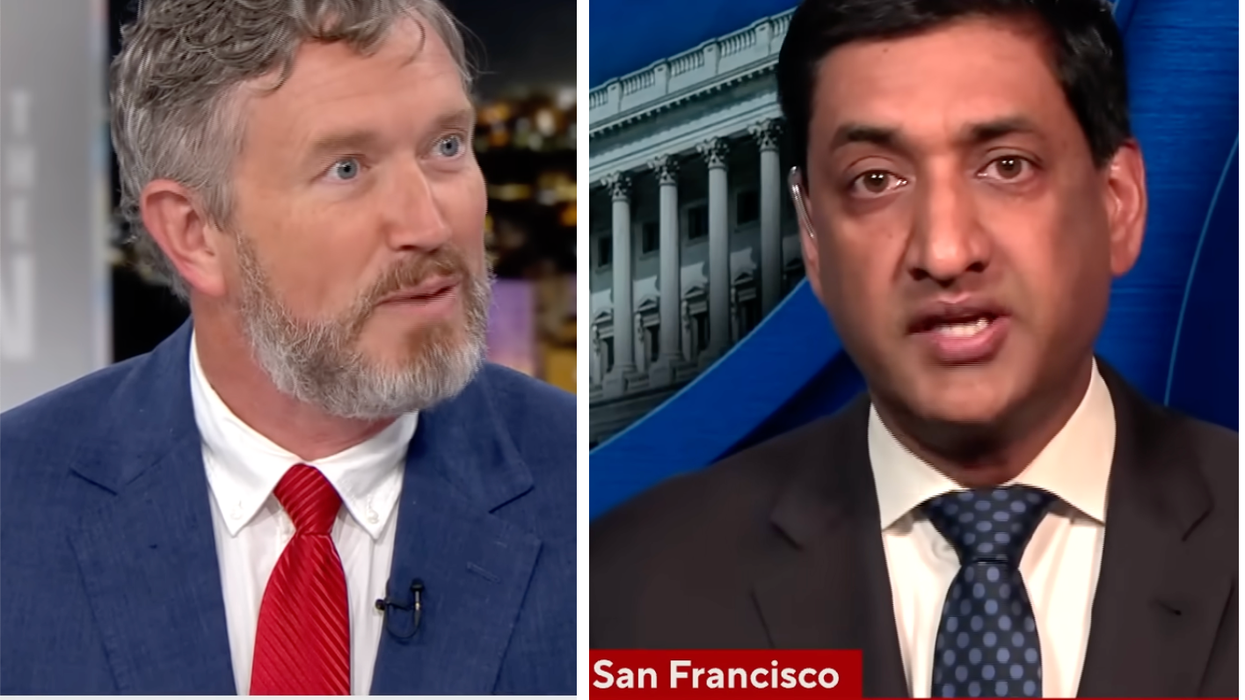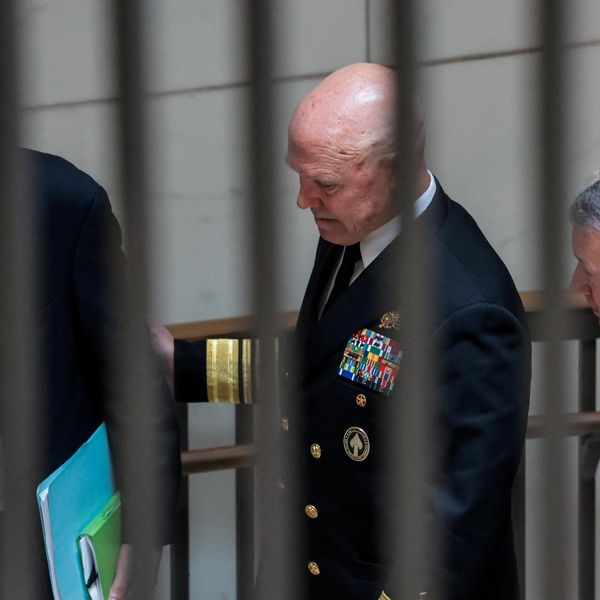The more Palestinians believe that Washington is condoning the unprecedented devastation of Gaza and the killing and injuring of tens of thousands of Palestinians, the higher the probability that Hamas’s resistance against Israel could expand into a global jihad and raise the terrorism threat against the United States.
Will the absence of a settlement of the conflict through a two-state solution or some other fair and equitable modality usher in a new generation of Arab and Islamic global jihadists? Have U.S. policymakers considered the long-term implications of such a frightening development? Isn’t it tragic that, after spending over 20 years fighting al-Qaida and ISIS, the United States may be inadvertently contributing to the making of new cadres of violent jihadists, many of whom were not even born before 9/11?
The frequent video broadcasts by Abu Ubayda, Hamas’s military spokesman, chronicling Al-Qassam Brigades’ purported successes against Israeli forces in Gaza are beginning to resemble announcements by former al-Qaida and ISIS military spokesmen, including in some cases, Qur’anic citations of suras and ‘ayas (Chapters and verses), mostly revealed to the Prophet Muhammad in Medina (versus Mecca). In previous Gaza wars (2008-2021), Hamas viewed Israel as its primary adversary, the so-called “near enemy.”
In the current war, Hamas, Islamic Jihad, and other Palestinian militants, much like Wahhabi Salafi radicals in the 1990s and early 2000s, have begun to consider the United States as their other enemy, the so-called “far enemy.” Hamas spokesman Osama Hamdan articulated this view in the latest press conference on December 26.
To many of these radicals, the United States, in partnering with Israel’s military campaign against the Palestinians, has become a legitimate target for violent jihad. As this view solidifies within Hamas and the Palestinian resistance at large, not to mention across the Arab and Islamic worlds, terrorist threats against the United States — in the region and in the homeland — are likely to increase. Because of Washington’s persistent refusal to support United Nations resolutions calling for a permanent ceasefire, Washington has lost what little credibility it had left as an “honest broker” in the Palestine conflict.
According to a recent public opinion poll, majorities of Palestinians in Gaza — and more significantly in the West Bank — view the U.S. less favorably than any other time in recent years. As they become more radicalized and frustrated, Hamas and other Palestinian militants will increasingly adopt the view that America is their enemy, and they are therefore duty-bound to wage violent jihad against American facilities and personnel.
Al-Qaida has long viewed the United States as an “infidel” far enemy, and if the Gaza war continues in its present configuration, Hamas will follow suit and will join the global jihad. Thus, Hamas’s heretofore religious nationalist struggle in Palestine could evolve into a global Islamic jihadist ideology that could resonate among disenfranchised, angry, and unemployed Muslim youth across the Muslim world, including in some Western countries in which sizable Muslim communities live.
Palestinians believe that Israel created the first Palestinian displacement, or Nakba, in 1948. In the current Gaza war, Hamas believes that Israel and its partner, the United States, are creating the second Palestinian Nakba in 2023-2024.
Hamas’s likely ideological transformation
As I wrote recently, Hamas’s war against Israel over the years has been primarily expressed in the form of resistance — military and political — against the Israeli occupation in the West Bank and control of Gaza. Since the horrific October 7 assault on the Israeli communities in southern Israel and the massive Israeli military response, backed by Washington’s military, economic and political support, the United States has emerged in Hamas’ rhetoric as the second enemy.
In their mind, violent jihad against this new enemy is now permissible and legitimate. Adopting such a position would signal that some Hamas military leaders could move away from the Muslim Brotherhood’s mainstream Islamic ideology focusing on local Muslim communities toward the radical rhetoric of Sayyid Qutb, the most extreme thinker of the Muslim Brotherhood, and from there to Wahhabi Salafi jihadism.
Qutb, who was executed by Egypt in the mid-1960s, preached in his book Signposts (ma’alim fi al-Tariq) that the enemies of Islam are Muslim leaders who exhibit un-Islamic behavior and their supporters among foreign infidel leaders, such as Israel and the United States and their allies. He called the Muslim leaders the “near enemy” and the foreign leaders the “far enemy.” He urged Muslims to wage a necessary jihad against both groups of leaders and their countries.
Qutb and subsequent radical Palestinian leaders moved closer ideologically to radical Wahhabi clerics and ulama in Saudi Arabia. They jointly began to articulate a common ideological front of global jihad against all infidels and unbelievers domestically and internationally, which set the stage for 9/11. It’s noteworthy to remember that Osama bin Laden frequently invoked Palestine in his speeches and messages railing against the United States.
Under the influence of Qutb’s writing, leading Hamas jihadists like Shaikh Ahmed Yassin moved away from the Egyptian Al-Azhar Islam, reflected in the three mainstream schools of jurisprudence in Sunni Islam — the Shafi’i, the Maliki, and the Hanafi schools — toward the Saudi Wahhabi interpretation, which primarily adheres to the Hanbali school of jurisprudence, the fourth and most radical school in Sunni Islam.
Under the Hanbali version of Islam, as articulated by the Saudi religious scholar Muhammad ibn Abd al-Wahhab in the 18th century, jihad is considered a sixth tenet of Islam — the other five being the traditional “pillars” of the religion: the Shahada (profession of one’s faith), Salat (prayers), Zakat (alms giving), Sawm (fasting), and the Hajj (Pilgrimage).
Of the 114 Suras in the entire Qur’an, 26 Suras, which feature a significant focus on jihad and fighting, were revealed to Prophet Muhammad in Medina while he was in the process of establishing his Islamic state and battling the mushrikun (polytheists, pagans, idolaters, and disbelievers). Radical jihadis, including followers of al-Qaeda and ISIS, often cite ‘ayas from the Medinan Suras in their defense of waging violent jihad against the perceived enemies of Islam. Examples of these Suras are Surat al-Ma’ida, Surat al-Baqara, Surat al-Nisa’, and Surat Muhammad.
For Hamas and Palestinians in general, the Biden administration has been an integral partner in Israeli Prime Minister Benjamin Netanyahu’s war of retribution in Gaza and its lack of logic, proportionality, and humanity. The White House has argued that Arab regimes for the most part loathe Hamas and the Muslim Brotherhood’s Islamic ideology and are therefore privately tolerant of Israel’s continued destruction of Gaza. This muddled logic, however, primarily focuses on Arab autocratic regimes, not their publics. The devastation of Gaza and the uprooting of nearly two million people will strengthen, not weaken, Arab publics’ support for Hamas or a successor group. Hamas is not just a group of militant jihadists comprising 30,000 plus fighters but an idea nurtured by the miserable Palestinian realities on the ground.
The way forward
To break the possibility of more terrorism, it’s time for President Biden to realize that the unprecedented and inhumane destruction of Gaza will not destroy Hamas or return the hostages safely. He should end his complicity in Israel’s war and work with Israeli and Palestinian leaders to remove Netanyahu and Palestinian leader Mahmoud Abbas from their leadership positions and work with Israelis and Palestinians to elect new leaders.
If the Biden administration puts forward a clear path for the two peoples to live together, whether in a two-state paradigm or some other legitimate political arrangement, Hamas’ terrorism threat against the United States would fizzle. The Palestinian people, like other peoples in the region, are more interested in living, putting food on the table, and educating their children. Once Israelis and Palestinians agree to move from the destruction of Gaza to a negotiated political and economic reconstruction, only then will the slow process of bringing the bloody history of Hamas’ Yahya Sinwar and Israel’s Benjamin Netanyahu — the region’s newest warmongers — come to an end.
















